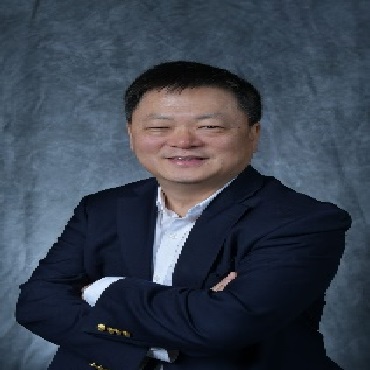Scientific Program
Keynote Session:
Title: Functional thin films and fiber-based membranes, assembled in room temperature, for flexible energy packs
Biography:
Fatemeh Zabihi is a faculty member in College of Material Science and Engineering in DHU. She has been working as postdoc. Fellow and senior researcher in University of Michigan-Shanghai Jiao Tong University Joint Institute FROM 2012-2014. According to her strong chemical and engineering background her multidisciplinary research is focused on Thin film Technology and Thin Film Solar Cells, Solution Processing and Solution Engineering, Surface Sciences and surface Phenomena, Coating and Spray Phyrolysis, Thermodynamic and Phase Equilibrium studies.
Abstract:
New generation of photovoltaic and electronic devices, assembled on flexible substrates such as papers, textiles and polymers promise daily application of miniaturized, portable and wearable power sources. However, commercialization of the technology is hindered by several tough challenges. A serious concern in this line arises from the tough manufacturing issues. Particularly, deposition of the typical semi-conductors such as metal oxide (SnO2, TiO2, NiOx, ZrO2 and ZnO), organic/ inorgainc perovskite and conjugated and doped donor- acceptor polymers, are necessarily associated with thermal annealing, which are incompatible with flexible background.Alternative low temperature techniques e.g. magnetron sputtering, photo-chemical activation by UV, and atomic-layer plasma assisted deposition (ALD) are assisted by chemical processes or need vacuum atmosphere, which are costly, utility consuming and environmental unfriendly. With this background, We pioneered a versatile, low-cost and potentially room-temperature strategy, which is applicable with all the features of solution processing (spin/ spray/ drop casting and jet printing). A fast exposure to the acoustic streams and ultrasonic waves allows evenly deposition of a compact, pin-hole free and highly functional solid layer from collide solutions, free of heating and chemical processing.Ultrasonic assisted solution processing revolutionizes the status of flexible and wearable energy resources in our routine life, in a near future
Title: All-Inorganic Perovskite Quantum Dots Nanocomposites and Large Amount Production by Microfluidic System for the Applications in Q-LCD and QLED
Biography:
Professor Ru-Shi Liu received his Bachelor degree in Chemistry from Soochow University (Taiwan) in 1981. He got his Master Degree in nuclear science from the National Tsing Hua University (Taiwan) in 1983. He obtained two Ph.D. degrees in Chemistry from National Tsing Hua University in 1990 and from the University of Cambridge in 1992. He joined Materials Research Laboratories at Industrial Technology Research Institute as an Associate Researcher, Research Scientist, Senior Research Scientist and Research Manager from 1983 to 1995. Then he became an Associate Professor at the Department of Chemistry of the National Taiwan University from 1995 to 1999. Then he promoted as a Professor in 1999. In July 2016, he became the Distinguished Professor. He got the Excellent Young Person Prize in 1989, Excellent Inventor Award (Argentine Medal) in 1995 and Excellent Young Chemist Award in 1998. He got the 9th Y. Z. Hsu scientific paper award due to the excellent energy saving research in 2011. He received the Ministry of Science and Technology award for distinguished research in 2013 and 2018. In 2015, he received the distinguished award for Novel and Synthesis by IUPAC & NMS. In 2017, he got the Chung-Shang Academic paper award. In 2018 he received the highly cited researchers by Clarivate Analytics and Hou Chin-Tui Award. His research is concerning in the Materials Chemistry. He is the author and co-author of more than 560 publications in scientific international journals with total citations > 14,838, h-index: 63. He has also granted more than 200 patents.
Abstract:
All-inorganic CsPbX3 (X = I, Br, Cl) perovskite quantum dots (PQDs) have been extensively investigated because of their unique optical properties, such as tunable wavelength, narrow band, and high quantum efficiency. These fascinating features of inorganic nanocrystals have been utilized in light emitting diode (LED) devices. For application in lighting and backlight display, the stability of PQDs should be further improved. Degradation of PQDs is mainly caused by temperature, oxygen, moisture, and light. Surface passivation and surface protective shell can improve the stability of LEDs. After resolving this problem, we further applied wide color-gamut in PQD-based LEDs for backlight display. We also successfully used PQDs in an on-chip LED device. Our white LED device for backlight display pass through a color filter with an NTSC value of 113% and Rec. 2020 of 85%. To further improved the stability of CsPbBr3, we developed three-steps treatment on CsPbBr3. For lighting application, we fabricated white LEDs exhibit a luminous efficiency of 19.0 lm/W, R9 of 96, CRI of 84.7 and a CCT of 3328 K, respectively. Successive and scalable synthesis of highly stable Cs4PbBr6 perovskite microcrystal by the microfluidic system and their application in backlight display will be demonstrated.
Oral Session 1:
- Nanotechnology|Nanomedicine|Materials science in Nanotechnology
A PHP Error was encountered
Severity: 8192
Message: trim(): Passing null to parameter #1 ($string) of type string is deprecated
Filename: pastconference/past-program-schedule.php
Line Number: 354
Backtrace:
File: /efsdata/meetingsint-com/application/views/pastconference/past-program-schedule.php
Line: 354
Function: trim
File: /efsdata/meetingsint-com/application/controllers/Pastconference.php
Line: 128
Function: view
File: /efsdata/meetingsint-com/index.php
Line: 317
Function: require_once
Title: A numerical approach for determining representative flow-curve of spherical nanoindentation
Biography:
Fei-Ya Huang has received PhD in materials science and engineering from the National Cheng Kung University in Taiwan. She has her expertise in evaluation and passion in investigating the mechanical properties and deformation behavior of metal by nanotechnology including nanoindentation, scanning electron microscopy and electron backscattering diffraction. She is now focusing on the connection between nanoindentation and traditional tensile test and observing the deformation evolution of nanoinentation.
Abstract:
Nanoindentation techniques have the capability to detect consistently mechanical properties of materials such as Young’s modulus and hardness. More specifically, P-h curve obtained from nanoindentation can be referred to as representative stress-strain curves (RSS) by introducing a constraining factor. Hence, it can be compared to the uniaxial stress-strain curve. Comparing to the sharp indenter, spherical indenter has been used to study the RSS curve due to relatively smoother stress fields’ distributions. However, it remains a significant challenge because the complex stress field beneath the indenter occurs during indenting. In our study, the finite element method was applied to simulate spherical nanoindent and uniaxial tensile tests for elastic-plastic material. We aimed to discover the best agreement between RSS and USS with six protocols of representative strain and three different definitions of determining contact depth. Figure 1 presents a p-h curve of elastic-plastic material which was simulated by FE analysis. The maximum depth was set to 600nm. Figure 2 shows an example of the comparison of RSS and USS. The indentation stress was calculated by σr=ð‘ƒ/(3ðœ‹ð‘Ž^2 ) where the constant of 3 is the constraint factor. The indentation strains were obtained from Tabor, Johnson, Kalidindi, Milman, and Ahn’s definitions. As shown in Figure 2, the strain of Ahn’s method reveals better agreement than others with the USS curve. However, there is a bit of deviation between USS and RSS at the elastic-plastic transition region. It can be noted that material with small E/Y will cause a long transition region and thus increase the deviation. Furthermore, once the flow curve reaches a plateau, the RSS and USS will not fit with each other anymore because the plastic zone is no longer constrained by surrounding elastic material. In the following works, we will present all combinations of strain and contact depth to observe the relationship between RSS and USS.




